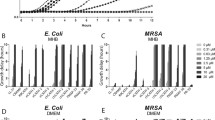Abstract.
A database search identified a rat cDNA clone which phylogenetic analysis revealed to encode a cathelicidin most similar to mouse cathelicidin CRAMP. The analysis also showed that the evolutionary pattern of the cathelicidin family is lineage specific. The rat cathelicidin is called rCRAMP. Its peptide was isolated from granulocytes, and determined to be 43 amino acids long by mass spectrometry and N-terminal sequencing. Synthetic rCRAMP had antimicrobial activity. The expression of rCRAMP was investigated by reverse-transcriptase polymerase chain reaction followed by Southern hybridization and by Western blot analysis. rCRAMP was identified in granulocytes, thymus, testis, lung, mouth mucosa, tongue, oesophagus, colon, caecum and small intestine, a distribution similar to cathelicidins of mouse and human. The rat is a small laboratory animal with additional disease models available compared to the mouse. Our results open up the possibility to use the rat as a model system to study responses connected to cathelicidin expression in health and disease.
Similar content being viewed by others
Author information
Authors and Affiliations
Additional information
Received 4 December 2002; received after revision 17 January 2003; accepted 20 January 2003
RID="*"
ID="*"Corresponding author.
Rights and permissions
About this article
Cite this article
Termén, S., Tollin, M., Olsson, B. et al. Phylogeny, processing and expression of the rat Cathelicidin rCRAMP: a model for innate antimicrobial peptides. CMLS, Cell. Mol. Life Sci. 60, 536–549 (2003). https://doi.org/10.1007/s000180300045
Issue Date:
DOI: https://doi.org/10.1007/s000180300045




